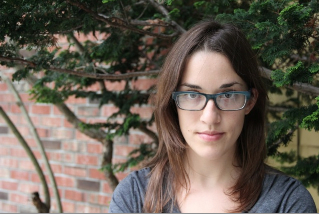Spring Lecture Series Recap: Molecularizing Taste at the Intersection of Biochemistry and French Cuisine
Molecular gastronomy, a hot trend in the food world in recent years, tends to evoke either quizzical or enthusiastic looks from food nerds—including many of us who are in the BU Gastronomy program. Chefs Ferran Adrià of El Bulli, Heston Blumenthal of The Fat Duck, and Pierre Gagnaire of Restaurant Pierre Gagnaire come to mind as ringleaders who helped to popularize this movement of manipulating the molecular structure of food. Their restaurants often have long waitlists, with some reaching up to four years.
 Those curious to learn more, along with my Food and the Senses class (ML 715), attended Molecularizing Taste at the Intersection of Biochemistry and French Cuisine on April 22,2014. Presented by Sofia Roosth, Ph.D., Assistant Professor at Harvard University, the lecture spotlighted taste and its relationship to science and culinary heritage.
Those curious to learn more, along with my Food and the Senses class (ML 715), attended Molecularizing Taste at the Intersection of Biochemistry and French Cuisine on April 22,2014. Presented by Sofia Roosth, Ph.D., Assistant Professor at Harvard University, the lecture spotlighted taste and its relationship to science and culinary heritage.
Roosth, an anthropologist of science, spoke about the ethnographic research she performed in Paris, France on molecular gastronomy. She studied the work of Hervé This, a physical chemist and one of the founding fathers of food science, alongside his research assistants in his AgroParisTech lab, part of Institut National de la Recherche Agrnomique (INRA).
Originally known as molecular and physical gastronomy, molecular gastronomy debunks the how and why behind cooking. It is used in conjunction with technoscience, a term that Roosth defines as the combination of technology and science. Methods used to study the chemical compositions of foods include nuclear magnetic resonance (NMR) spectroscopy and thin-layer chromatography.
 Delving deeper into discovering the science behind food, This set out to improve the cooking and dining experience. He built off the works of Marie-Antoine Carême and Auguste Escoffier, who codified old wives’ tales in recipes to prove why they worked (or why they didn’t).
Delving deeper into discovering the science behind food, This set out to improve the cooking and dining experience. He built off the works of Marie-Antoine Carême and Auguste Escoffier, who codified old wives’ tales in recipes to prove why they worked (or why they didn’t).
However, when brought into a restaurant, molecular gastronomy extends beyond the field of science and enters the realm of performance art. Typically, diners are presented with a multi-course menu where each dish builds off the previous to defy culinary conventions. The beauty behind the scientific approach to food is that each step of the cooking process can be analyzed, deconstructed to its elements, and applied to creating everything from foams made with lecithin or instant ice cream made with liquid nitrogen. Chefs manipulate diners’ senses, leaving them with a new perspective on the culinary arts.
Manipulating food in the culinary world isn’t the only application of molecular gastronomy. Roosth mentioned that it could potentially be used to tackle food insecurity in developing countries as well. Many research centers around the world are using technoscience to create food products aimed at helping reverse this chronic issue.
While ending world hunger is a huge feat in itself, molecular gastronomy can be used in a multitude of ways and will be here for some time.
Marleena Eyre is a second year Gastronomy student, an editorial intern at NoshOn.It, and blogs at The Flex Foodie. When she’s not studying or writing about food, she can be found paging through cookbooks at her local bookstores or sculling on the Charles River with her rowing team. She can be reached at marleenaeyre@gmail.com.
